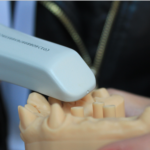
Removable Partial Dentures (RPDs) are an essential component of dental rehabilitation and have a crucial role for the patient’s function, aesthetic and more importantly oral-related quality of life. The advent of CAD-CAM systems for the planning of removable partial dentures making offers an alternative to the conventional techniques using casting method which can be complex and a source of errors in the making the final device.
The aim of this systematic review was to determine whether CAD-CAM systems are accurate for the manufacturing of RPD frameworks.
Methods
Searches were conducted in the Medline-PubMed, Web of Science, Scopus, Lilacs and Cochrane Library electronic databases. No language restriction was applied and articles published between January 1994 and November 2019 were included. Randomized control trials, prospective longitudinal studies and comparison studies between intraoral and extraoral scanning or the conventional method impression or comparison between conventional frameworks and digital frameworks (using a CAD-CAM system); studies evaluating accuracy, trueness, adaptation of framework and retention of the prosthesis were considered. Three reviewers independently selected studies, assessed quality and extracted data.
Results
- 7 studies (5 in vitro studies, 1 clinical study cross-sectional and 1 clinical study)
- 6 out of 7 studies compared conventional method of fabricating RPD frameworks with different digital techniques and different materials.
- 6 out of 7 studies compared the fit of the framework
- Hayama et al, 2019 (in-vitro study) demonstrated that digital impressions were superior in trueness but inferior in precision compared to conventional impressions for partially edentulous ridge (P<.05)
- Soltanzadeh et al, 2018 (in-vitro study) demonstrated that the fit and accuracy of framework was significantly better in conventional groups as opposed to 3-printed framework groups (P=0.01)
- Tregerman et al, 2019 (Clinical study cross-sectional) demonstrated that digital method had significantly better clinical fit than traditional method (P<0.01)
- Arnold et al, 2018 (in-vitro study) demonstrated that indirectly and directly milled RPDs showed significantly better fit than conventional techniques (P<0.5)
- Ye et al, 2017 (clinical study) results suggested that the conventional technique showed better fit than the CAD-CAM technique. (P=0.003) Ye et al, 2018 (in vitro) demonstrated that Milled frameworks from polyetheretherketone (PEEK) blocks had a better fit than traditional metal cast framework RPDs (P=0.005 for lower major connector thickness and P<0.001 for lower denture base thickness)
- Chen et al, 2019 (in vitro) demonstrated than no significant differences were found between stone cast + lost wax technique and CAD-CAM system from stone cast scanning.
Conclusions
The authors concluded: –
The digital technique for RPD framework fabrication is accurate because the misfits and mismatches found in in vitro and clinical studies are within the acceptable clinical limit for RPDs.
RPDs produced by rapid prototyping exhibited the highest discrepancies when using SLM.
PEEK RPDs produced by rapid prototyping exhibited good results in terms of the framework fit.
Only 2 clinical studies assessed the fit of frame- works, and the methodological quality of the studies presents limitations that need to be addressed in future clinical studies.
Comments
The authors have searched articles from 6 major databases and aimed to follow the PRISMA guideline for reporting systematic reviews. The 5 in vitro studies included 129 frameworks to analyze while the 2 clinical studies included 24 participants altogether.
This systematic review shows promising and innovative way of constructing RPDs thanks to the CAD-CAM methods. Unfortunately, the heterogeneity and lack of reproducible results between studies fails to produce strong evidences for using CAD-CAM methods as opposed to the conventional one which seems to yield satisfactory results. The CAD-CAM system can simplify the technique, minimize laboratory errors and reduce clinical time. Further research and reproducible high-quality studies highlighting the patients’ experience and related outcome with CAD-CAM and its cost effectiveness compared to more conventional techniques would allow for more evidences to support the use of CAD-CAM systems as a routine clinical technique for RPD framework fabrication.
Links
Primary Paper
Carneiro Pereira AL, Bezerra de Medeiros AK, de Sousa Santos K, Oliveira de Almeida É, Seabra Barbosa GA, da Fonte Porto Carreiro A. Accuracy of CAD-CAM systems for removable partial denture framework fabrication: A systematic review. J Prosthet Dent. 2020 Mar 5:S0022-3913(20)30018-4. doi: 10.1016/j.prosdent.2020.01.003. Epub ahead of print. PMID: 32147252.
Other references
Hayama H, Fueki K, Wadachi J, Wakabayashi N. Trueness and precision of digital impressions obtained using an intraoral scanner with different head size in the partially edentulous mandible. J Prosthodont Res. 2018 Jul;62(3):347-352. doi: 10.1016/j.jpor.2018.01.003. Epub 2018 Mar 2. PMID: 29502933.
Soltanzadeh P, Suprono MS, Kattadiyil MT, Goodacre C, Gregorius W. An In Vitro Investigation of Accuracy and Fit of Conventional and CAD/CAM Removable Partial Denture Frameworks. J Prosthodont. 2019 Jun;28(5):547-555. doi: 10.1111/jopr.12997. Epub 2018 Nov 22. PMID: 30407685.
Tregerman I, Renne W, Kelly A, Wilson D. Evaluation of removable partial denture frameworks fabricated using 3 different techniques. J Prosthet Dent. 2019 Oct;122(4):390-395. doi: 10.1016/j.prosdent.2018.10.013. Epub 2019 Apr 1. PMID: 30948301.
Arnold C, Hey J, Schweyen R, Setz JM. Accuracy of CAD-CAM-fabricated removable partial dentures. J Prosthet Dent. 2018 Apr;119(4):586-592. doi: 10.1016/j.prosdent.2017.04.017. Epub 2017 Jul 11. PMID: 28709674.
Ye H, Ning J, Li M, Niu L, Yang J, Sun Y, et al. Preliminary clinical application of removable partial denture frameworks fabricated using computer-aided design and rapid prototyping techniques. Int J Prosthodont 2017;30:348-53.
Ye H, Ning J, Li M, Niu L, Yang J, Sun Y, Zhou Y. Preliminary Clinical Application of Removable Partial Denture Frameworks Fabricated Using Computer-Aided Design and Rapid Prototyping Techniques. Int J Prosthodont. 2017 Jul/Aug;30(4):348-353. doi: 10.11607/ijp.5270. PMID: 28697204.
Chen H, Li H, Zhao Y, Zhang X, Wang Y, Lyu P. Adaptation of removable partial denture frameworks fabricated by selective laser melting. J Prosthet Dent 2019;122:316-24.
Dental Elf – 23rd Jun 2017
Photo Credits
Photo by Quang Tri NGUYEN on Unsplash
